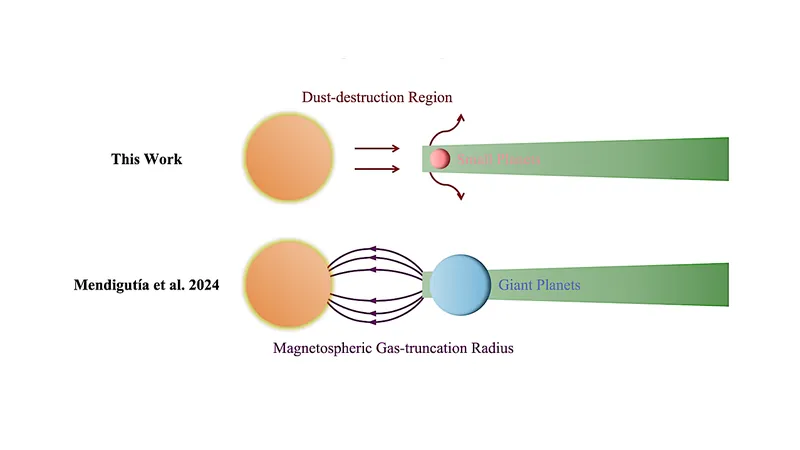
Unlocking the Secrets of the Inner Edge: How Stellar Mass Influences Planetary Formation
2025-01-12
Author: Jacques
Introduction
Understanding the location of the innermost planet in a planetary system—termed the inner edge—offers profound insights into the dynamics between planets and their host stars. This relationship can unveil crucial details regarding planetary formation and evolutionary processes, particularly in multi-planetary systems.
Recent Research Advances
Recent research that utilizes the Kepler Data Release 25 (DR25) catalog along with data from LAMOST and Gaia has shed new light on this intriguing field. Scientists investigated the correlation between the stellar mass of host stars and the position of the inner edge for populations of small planets, including super-Earths and sub-Neptunes.
Findings on Stellar Mass and Inner Edge
Remarkably, after accounting for the influence of stellar metallicity and addressing observational selection biases, these researchers confirmed an essential trend: as the stellar mass increases, the inner edge of planetary systems tends to shift outward. Their analysis revealed a robust correlation with a power-law index ranging from 0.6 to 1.1—significantly stronger than previous findings, which have often underrepresented this connection.
Factors Enhancing Correlation
What accounts for this enhanced correlation? Two main factors stand out. First, applying a correction for metallicity in this study enhances the observed relationship between stellar mass and the inner edge. Second, prior studies relying on occurrence rates to approximate the inner edge may have diluted the true correlation observed in these latest results.
The Role of Dust Sublimation Radius
Moreover, a comparison of observed statistical data with existing theoretical models suggests that the dust sublimation radius from protoplanetary disks during the pre-main-sequence phase closely aligns with the stellar mass of observed inner edges. This pivotal finding suggests that the inner dust disk plays a critical role in determining the orbits of smaller planets.
Contrasting with Hot Jupiters
Intriguingly, this stands in contrast to the inner edges of hot Jupiters—massive gas giants that typically interact differently with their stellar environments, particularly through their magnetospheres. This research indicates that distinct planetary populations might be governed by a variety of mechanisms when it comes to their inner edges, hinting at the complexity behind planetary formation.
Conclusion
In summary, the connection between stellar mass and the inner edge position not only enhances our understanding of planetary system architectures but also opens up new avenues for exploring the unique conditions shaping the formation processes of various types of planets. Keep an eye on future studies, as they continue to unravel the mysteries of our universe!



 Brasil (PT)
Brasil (PT)
 Canada (EN)
Canada (EN)
 Chile (ES)
Chile (ES)
 Česko (CS)
Česko (CS)
 대한민국 (KO)
대한민국 (KO)
 España (ES)
España (ES)
 France (FR)
France (FR)
 Hong Kong (EN)
Hong Kong (EN)
 Italia (IT)
Italia (IT)
 日本 (JA)
日本 (JA)
 Magyarország (HU)
Magyarország (HU)
 Norge (NO)
Norge (NO)
 Polska (PL)
Polska (PL)
 Schweiz (DE)
Schweiz (DE)
 Singapore (EN)
Singapore (EN)
 Sverige (SV)
Sverige (SV)
 Suomi (FI)
Suomi (FI)
 Türkiye (TR)
Türkiye (TR)
 الإمارات العربية المتحدة (AR)
الإمارات العربية المتحدة (AR)